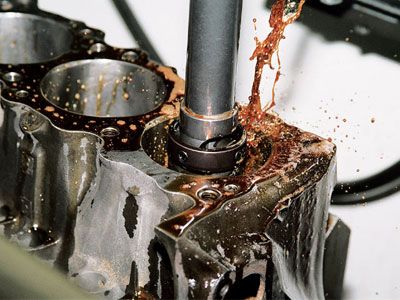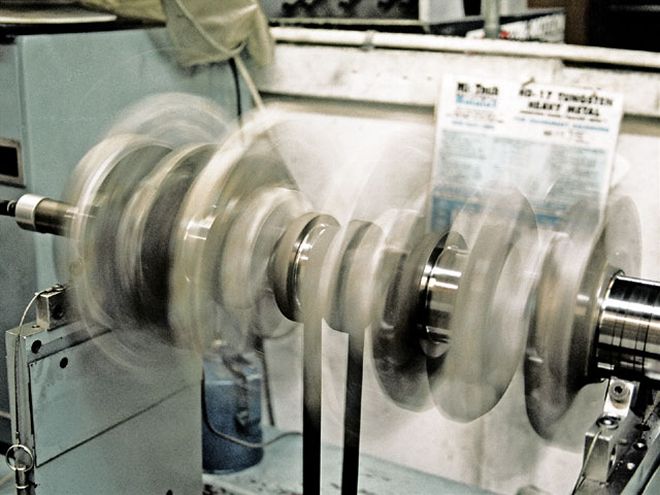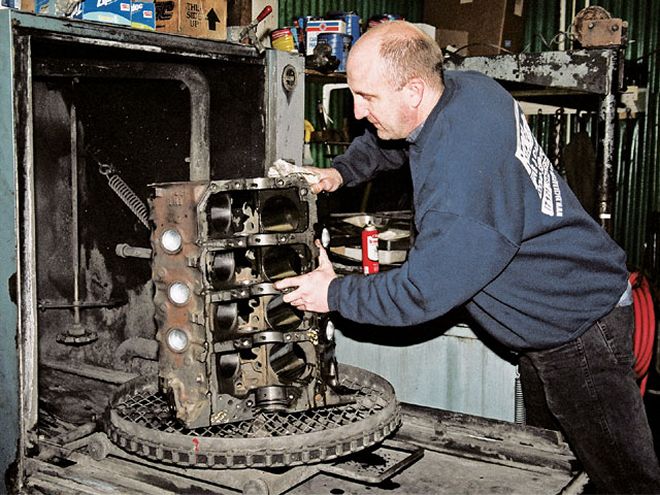

It's often said that you never really know what you have until it's gone. This applies to the Pontiac 350 because this smaller version of the PMD family of engines was plentiful back in the day and found under the impressive hoods of many models. It was smooth, powerful for its size (in four-barrel form), reliable, and surprisingly fuel-efficient. But 350 Ponchos were a dime a dozen so they were often deliberately and carelessly discounted by the enthusiast community due to the availability of more powerful 400 and 455 mills. As a result, many were gleefully yanked out and tossed to the side with less regard than yesterday's newspaper.
Featuring a bore of 3.875 inches and a stroke of 3.750 inches (the same stroke as the 326, 389 and 400) and a generous main bearing diameter of 3.00 inches, the engine can be built into a force to be reckoned with.
 After disassembly, the engine block was thoroughly cleaned in a high-pressure spray tank. This equipment quickly removes all debris from the engine block and uses a heated detergent solution, along with pressure as high as 1,000 psi. It's similar in function to a dishwasher. Here, Rick Hartenstine loads the engine block onto the revolving turntable.
After disassembly, the engine block was thoroughly cleaned in a high-pressure spray tank. This equipment quickly removes all debris from the engine block and uses a heated detergent solution, along with pressure as high as 1,000 psi. It's similar in function to a dishwasher. Here, Rick Hartenstine loads the engine block onto the revolving turntable.
With all Pontiac values on the rise, we are seeing more and more Pontiac owners desiring to rebuild the numbers-matching 350s in their rides instead of swapping them out for a larger engine. But like all of us, they want their cake and to eat it, too. With the rebuild must come more power.
Thus you can imagine the excitement at HPP when Bob Wise, from RaceKrafters Automotive Machine in Lancaster, Pennsylvania, called and told us about Jason Korb and his Pontiac 350. Jason wanted to retain the YJ-code 265-horse 350 engine and No. 17 small-valve heads for his project. He already installed an aftermarket four-barrel carb, intake, and headers, but was interested in having RaceKrafters do a thorough rebuild, while releasing some more ponies. With RaceKrafters' Pontiac knowledge paired with the shop's machining and testing capabilities, a methodical and race-inspired approach was applied to this budget build-up. HPP will be able to supply the readers with cylinder head flow numbers, along with engine and chassis dyno results for a true Pontiac 350 and not a "corporate" version-an opportunity that we can't pass up.
In this first installment, we will cover the machining procedures, while in successive months we'll have the assembly and engine dyno testing. The final installment will be a tune of the 350 once it's placed in the engine bay of the Firebird. So for all of you who have asked for a realistic Pontiac 350 street-engine build up, here it is.
Cylinder Head Flow After Porting
Due to a computer issue at RaceKrafters, baseline numbers are not available. However, for comparison sake, a typical D-port head with larger 2.11/1.77 valves than the No. 17 head used here usually flow between 205 and 210-cfm on the intake at 28 inches of depression at 0.450 lift.